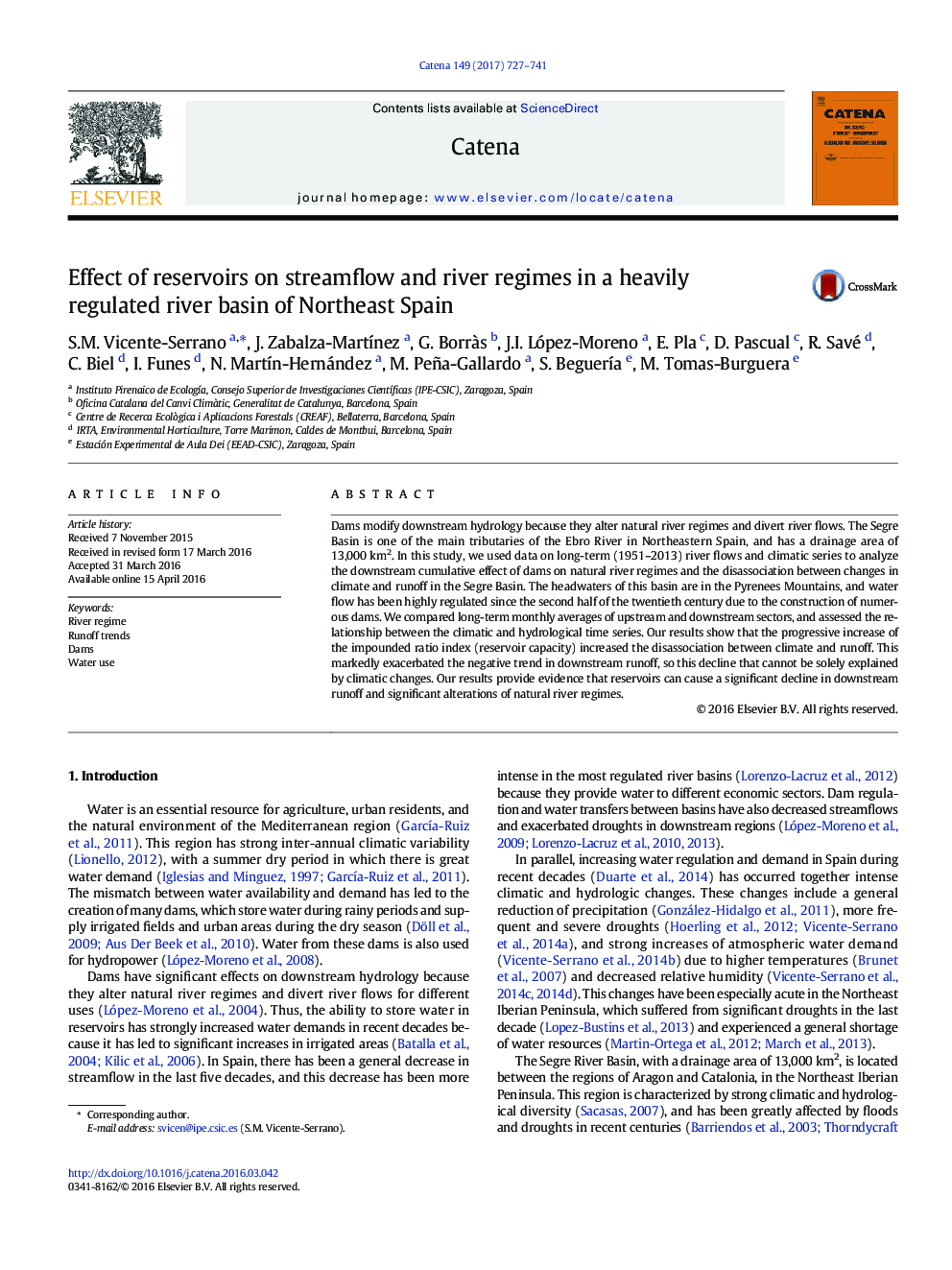| Article ID | Journal | Published Year | Pages | File Type |
|---|---|---|---|---|
| 5770104 | CATENA | 2017 | 15 Pages |
â¢Reservoirs have changed the river regimes downstream.â¢There is greater reduction of streamflow at the lower areas of rivers.â¢Climate changes cannot explain changes in streamflow at the lower areas.â¢Dam operations and irrigation explain changes.â¢Climate has had a decreasing influence on streamflow during the study period.
Dams modify downstream hydrology because they alter natural river regimes and divert river flows. The Segre Basin is one of the main tributaries of the Ebro River in Northeastern Spain, and has a drainage area of 13,000Â km2. In this study, we used data on long-term (1951-2013) river flows and climatic series to analyze the downstream cumulative effect of dams on natural river regimes and the disassociation between changes in climate and runoff in the Segre Basin. The headwaters of this basin are in the Pyrenees Mountains, and water flow has been highly regulated since the second half of the twentieth century due to the construction of numerous dams. We compared long-term monthly averages of upstream and downstream sectors, and assessed the relationship between the climatic and hydrological time series. Our results show that the progressive increase of the impounded ratio index (reservoir capacity) increased the disassociation between climate and runoff. This markedly exacerbated the negative trend in downstream runoff, so this decline that cannot be solely explained by climatic changes. Our results provide evidence that reservoirs can cause a significant decline in downstream runoff and significant alterations of natural river regimes.
